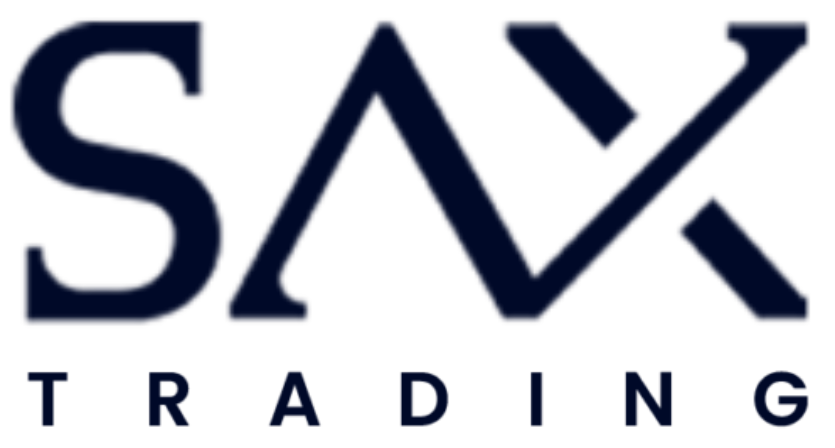The global oil market in 2025 finds itself at a critical juncture, characterized by contradictory forces that have created unprecedented price volatility and strategic uncertainty for industry participants. On one hand, a significant global supply glut has emerged, with production capacity outpacing demand growth and creating downward pressure on prices. On the other hand, persistent regional conflicts and geopolitical tensions continue to introduce sporadic supply disruptions and risk premiums that temporarily drive prices upward. This fundamental tension between structural oversupply and acute geopolitical risk has resulted in oil price fluctuations of up to 15% within single trading weeks, creating extraordinary challenges for producers, consumers, and market intermediaries attempting to navigate this complex landscape.
The oversupply situation dominating 2025’s oil market represents the culmination of several years of production capacity expansion across multiple regions. U.S. shale output has demonstrated remarkable resilience despite previous price downturns, with technological improvements and operational efficiencies enabling profitable production at price points that would have been unviable just five years ago. Meanwhile, OPEC+ members have gradually increased their output as previous production agreements have loosened, with several members exceeding their quotas as they seek to maximize revenue in a competitive market environment. Adding further to global supply, significant new conventional production has come online from offshore projects in Guyana, Brazil, and Norway, projects that were sanctioned during the higher price environment of 2021-2022 and are now contributing to market abundance.
Against this backdrop of ample supply, demand growth has moderated significantly compared to historical patterns. The ongoing global energy transition has begun meaningfully impacting oil consumption in transportation sectors across developed economies, with electric vehicle adoption accelerating and fuel efficiency standards tightening. Economic growth in China, traditionally a primary driver of incremental oil demand, has settled into a more modest trajectory that relies less heavily on energy-intensive industrial expansion. These structural demand shifts, combined with cyclical economic slowdowns in several regions, have created a fundamental imbalance that the World Bank projects will keep oil prices at a five-year low through much of 2025, despite periodic spikes driven by geopolitical events.
The Geopolitical Premium: Regional Conflicts and Supply Risks
While market fundamentals point toward lower prices, the geopolitical landscape of 2025 continues introducing significant volatility through both actual and threatened supply disruptions. The ongoing conflict in the Red Sea region has periodically restricted shipping through this critical transit route, affecting approximately 10% of global oil movements and forcing costly rerouting of tankers around the African continent. These disruptions not only increase transportation costs but also extend delivery times, complicating inventory management for refiners and creating localized supply pressures in European and Mediterranean markets despite global abundance.
In Eastern Europe, tensions between major energy producers and their neighbors have resulted in periodic pipeline disruptions and export restrictions that particularly impact regional natural gas markets but also create ripple effects through broader energy commodity pricing. These disruptions, while typically resolved within weeks through diplomatic interventions, create significant uncertainty for energy-intensive industries and utilities in affected regions. Market analysts estimate that these geopolitical factors are maintaining a persistent risk premium of $5-8 per barrel in global oil prices, a premium that occasionally expands dramatically during acute escalations before gradually subsiding as immediate threats recede.
The Persian Gulf, historically the world’s most critical oil-producing region, has experienced its own set of tensions in 2025. Drone attacks targeting energy infrastructure in several Gulf states have highlighted the vulnerability of key production and export facilities despite sophisticated defense systems. While actual production disruptions have been minimal thus far, the psychological impact on markets has been substantial, with each incident triggering price spikes of 3-5% before technical assessments confirm limited physical damage. These security concerns have prompted increased investment in redundant export infrastructure and hardened protection systems, costs that ultimately flow through to production economics in the region.
Market Segmentation and Regional Disparities
A notable feature of the 2025 oil market is increasing segmentation and regional price disparities that challenge the notion of oil as a truly global commodity. Transportation constraints, quality differences, and policy interventions have created significant and persistent price spreads between major crude benchmarks. The Brent-WTI spread has widened to average $8-10 per barrel in 2025, reflecting both logistical constraints on U.S. exports and quality preferences among international refiners. Similarly, discounts for Russian crude grades to global benchmarks have expanded as sanctions and self-sanctioning behavior by international companies continue reshaping traditional trade flows.
These regional disparities extend to refined products markets as well. Diesel prices in Europe have maintained significant premiums to other regions following the restructuring of traditional import patterns after sanctions on Russian petroleum products. Meanwhile, gasoline markets in Asia have experienced periodic oversupply as new refining capacity in China and India has come online, oriented primarily toward middle distillate production but necessarily generating light ends that must find market outlets. These regional imbalances have created both challenges and opportunities for trading companies with global operations and logistics capabilities.
Policy interventions have further contributed to market fragmentation. Several major economies have implemented or expanded strategic petroleum reserves in 2025, with China, India, and the European Union all announcing significant reserve expansion programs. These strategic stockpiling activities, while providing some price support during periods of weakness, also introduce additional uncertainty regarding future government release policies during supply disruptions or price spikes. The increasing role of government actors with non-commercial objectives adds another layer of complexity to market dynamics already challenged by fundamental and geopolitical factors.
The Energy Transition: Accelerating Impact on Oil Markets
The global energy transition has moved from a distant consideration to an immediate market force in 2025, with increasingly visible impacts on both oil demand patterns and investment decisions throughout the value chain. Electric vehicle adoption has accelerated beyond most previous forecasts, with global EV sales increasing approximately 35% year-over-year and representing over 25% of new passenger vehicle sales in major markets including China, Europe, and parts of North America. This transportation electrification, combined with efficiency improvements in conventional vehicles, has begun flattening gasoline demand in developed economies despite continued overall economic growth.
Beyond the transportation sector, industrial decarbonization initiatives are similarly impacting oil demand in specific segments. Major chemical producers have accelerated investments in recycling technologies and bio-based feedstocks, reducing their reliance on petroleum-derived naphtha and other oil products. The petrochemical sector, previously viewed as the primary growth engine for long-term oil demand, is now showing more modest expansion trajectories as circular economy principles gain traction in both regulatory frameworks and corporate strategies.
These transition trends have profound implications for investment decisions throughout the oil value chain. Major international oil companies have continued diversifying their portfolios in 2025, with capital expenditures increasingly directed toward renewable energy, battery technologies, hydrogen initiatives, and carbon capture projects rather than traditional upstream oil development. This investment shift reflects both strategic positioning for the energy transition and pragmatic responses to financing challenges, as capital providers increasingly incorporate climate considerations into lending and investment decisions for fossil fuel projects.
OPEC+ Dynamics and Market Management Challenges
The oversupplied market conditions of 2025 have created significant challenges for OPEC+ as the producer alliance attempts to balance market management objectives with individual members’ revenue needs. The group’s cohesion has been tested by disagreements over production allocations, with several members exceeding their quotas as they seek to maximize output amid lower prices. Saudi Arabia, traditionally the alliance’s central stabilizing force, has found its market balancing role increasingly costly as it sacrifices market share to support prices while other producers expand output.
Technology has further complicated OPEC+’s market management efforts. The responsiveness of U.S. shale production to price signals has created a partial price ceiling, with any sustained price increases quickly triggering expanded drilling activity and production growth that offsets supply management efforts. This dynamic has forced OPEC+ to consider longer-term strategic approaches rather than short-term production adjustments, including potential focus on market share strategies that might discourage competing investments through sustained lower price environments.
The alliance has also faced growing political pressures related to climate policies and energy transition objectives. Several OPEC+ members have announced their own decarbonization initiatives and economic diversification programs in 2025, acknowledging the long-term challenges facing oil-dependent economies. These domestic priorities sometimes conflict with traditional market management objectives, creating additional complexity in the group’s decision-making processes and potentially limiting its future effectiveness as a coordinated market force.
Corporate Strategies in a Volatile Market
Oil industry participants have implemented diverse strategies to navigate 2025’s challenging market environment. Major international oil companies have generally maintained capital discipline despite periodic price improvements, prioritizing shareholder returns through dividends and share repurchases while focusing new investments on lower-risk, shorter-cycle projects with reduced break-even prices. This approach reflects both uncertainty about long-term demand trajectories and pressure from investors seeking immediate returns rather than production growth.
National oil companies have demonstrated more varied approaches aligned with their governments’ broader economic and strategic objectives. Some have pursued aggressive international expansion, acquiring assets divested by international companies and establishing stronger downstream positions in growth markets. Others have focused on domestic resource development and economic diversification initiatives, using oil revenues to fund transitions toward more sustainable economic models less dependent on hydrocarbon exports.
Trading companies and midstream operators have found opportunities amid the market volatility and regional disparities of 2025. Firms with global logistics networks, storage capabilities, and sophisticated risk management systems have capitalized on arbitrage opportunities created by regional price differentials and temporal market dislocations. These companies have increasingly expanded into adjacent services including emissions management, renewable fuels blending, and carbon credit trading, leveraging their existing capabilities while positioning for energy transition opportunities.
Technology and Innovation in Oil Markets
Technological innovation continues reshaping the oil industry in 2025, with digital technologies and automation driving efficiency improvements throughout the value chain. In upstream operations, advanced analytics and artificial intelligence applications have optimized drilling operations and reservoir management, reducing costs and improving recovery rates from existing assets. These technologies have been particularly impactful in mature basins, extending economic field life despite challenging price environments.
Refiners have similarly embraced digital transformation to enhance operational efficiency and flexibility. Advanced process control systems, predictive maintenance programs, and supply chain optimization tools have improved margins in a challenging market environment characterized by volatile feedstock costs and shifting product demand patterns. Leading refiners report that digital initiatives have delivered 15-20% improvements in maintenance efficiency and 2-3% reductions in energy consumption, critical advantages in a highly competitive market.
Beyond operational improvements, technology is enabling new business models and market approaches. Blockchain-based trading platforms have gained significant adoption for physical oil transactions, reducing documentation requirements and settlement times while improving transparency. Digital platforms connecting smaller producers directly with refiners and end-users have expanded, disintermediating traditional trading channels for certain transaction types. These innovations, while not fundamentally altering market dynamics, are incrementally improving efficiency and reducing friction throughout the value chain.
Environmental Considerations and Regulatory Pressures
Environmental considerations have become increasingly central to oil market dynamics in 2025, with both regulatory requirements and voluntary industry initiatives driving significant operational changes. Methane emissions reduction has emerged as a particular focus area, with major producing countries implementing or strengthening regulations requiring leak detection and repair programs, equipment upgrades, and continuous monitoring systems. These requirements, while adding to operational costs, have also created opportunities for technology providers specializing in emissions monitoring and abatement solutions.
Carbon pricing mechanisms have expanded their coverage and impact, with both explicit carbon taxes and cap-and-trade systems affecting oil industry economics in many regions. The European Union’s Carbon Border Adjustment Mechanism, fully implemented in 2025, has begun imposing carbon-related costs on petroleum products imported from regions without equivalent carbon pricing, creating new competitive dynamics in refined products markets. Similar mechanisms under development in other jurisdictions suggest a trajectory toward more comprehensive global carbon pricing, though with significant regional variations in implementation approaches and price levels.
Beyond regulatory compliance, leading oil companies have expanded voluntary sustainability initiatives in response to investor pressure and evolving societal expectations. These programs include enhanced environmental monitoring and disclosure, biodiversity protection measures around operational sites, and community engagement initiatives designed to secure and maintain social license to operate. While these voluntary measures create additional costs, they also potentially mitigate regulatory and reputational risks that could otherwise threaten asset values and operational continuity.
Outlook and Strategic Considerations
Looking ahead, the oil market’s fundamental oversupply condition appears likely to persist through 2025 and potentially beyond, suggesting a structural shift from previous market cycles. The International Energy Agency projects that global oil demand may peak before 2030, with the precise timing dependent on electric vehicle adoption rates, policy interventions, and economic growth patterns in developing economies. This outlook has profound implications for investment decisions, corporate strategies, and market structures throughout the oil value chain.
For market participants, these conditions underscore the importance of operational efficiency, portfolio flexibility, and sophisticated risk management capabilities. Companies that can thrive in a volatile, lower-margin environment while simultaneously positioning for energy transition opportunities will likely outperform peers focused exclusively on traditional business models. Similarly, financial investors must carefully evaluate both immediate cash flow potential and longer-term asset value considerations in an industry facing fundamental structural changes.
Geopolitical factors will undoubtedly continue introducing volatility despite the overall oversupply situation. The intersection of energy markets with broader strategic competition between major powers suggests that energy security considerations will remain prominent in both corporate decision-making and government policy formation. This reality creates both risks and opportunities for market participants with the capabilities to navigate complex international environments while managing operational and financial exposures.
Navigating Oil Market Complexity with Expert Partners
In this environment of unprecedented oil market volatility and structural transformation, having knowledgeable and experienced trading partners has never been more valuable. Despite the extraordinary challenges facing global oil markets in 2025, Sax Trading continues providing reliable sourcing and risk management solutions through its extensive network and market expertise. By leveraging deep understanding of both fundamental market dynamics and geopolitical risk factors, Sax Trading helps clients navigate complexity and capitalize on opportunities even in turbulent market conditions.
Whether you’re a refiner seeking reliable crude supply, a manufacturer concerned about energy input costs, or a distributor serving specialized market segments, today’s oil market demands sophisticated procurement strategies and risk management approaches. Sax Trading’s petroleum specialists understand the nuanced quality requirements, logistical considerations, and price risk factors specific to different market segments and can develop customized solutions aligned with your business objectives.
Contact Sax Trading today for a free consultation and discover how our expertise in global oil markets can help your business thrive despite current volatility. Our team will analyze your specific requirements and develop tailored strategies that ensure supply security, optimize costs, and effectively manage price risk in this challenging market environment.








